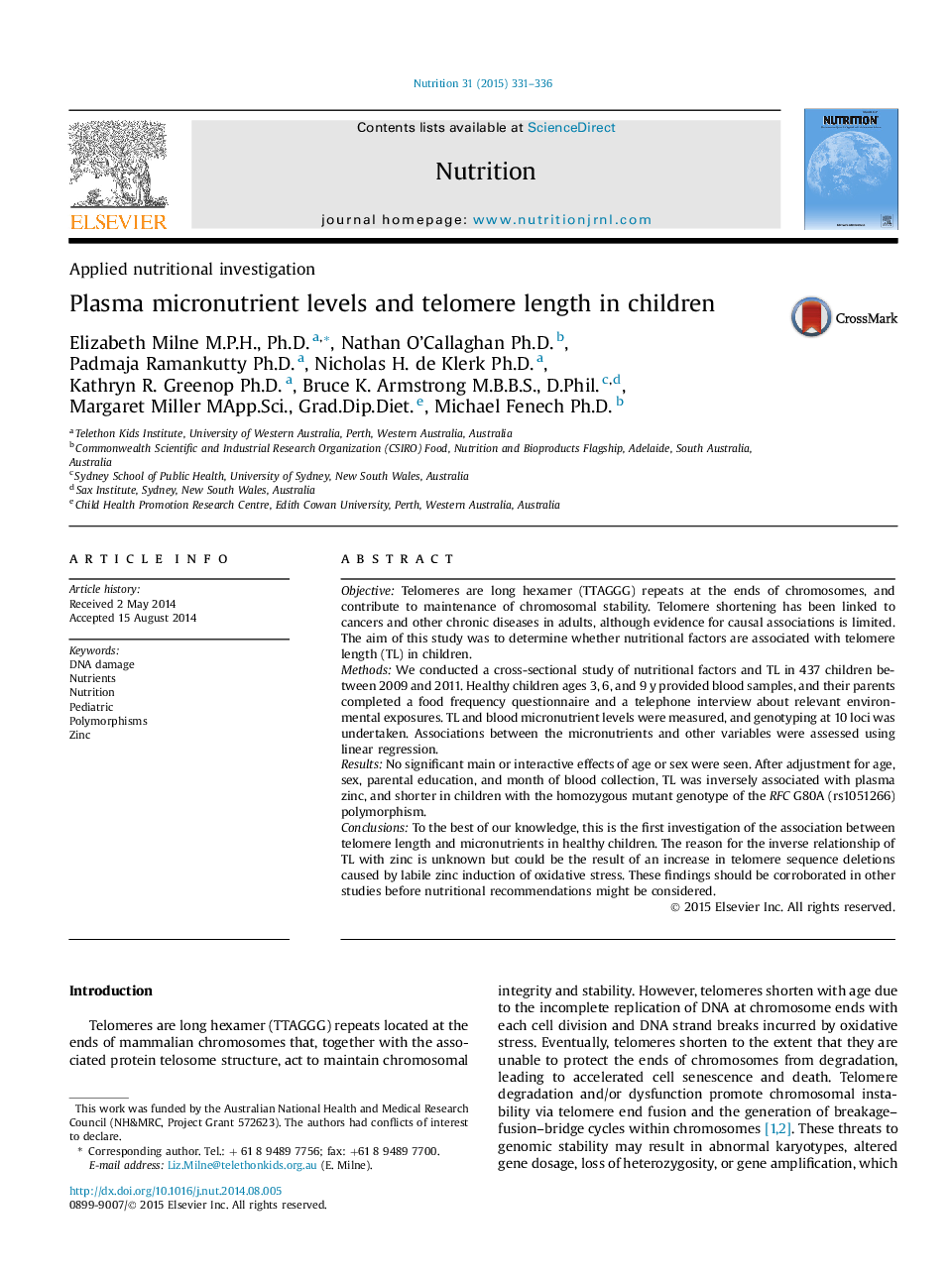| کد مقاله | کد نشریه | سال انتشار | مقاله انگلیسی | نسخه تمام متن |
|---|---|---|---|---|
| 6089239 | 1208538 | 2015 | 6 صفحه PDF | دانلود رایگان |
- Association between telomere length and blood micronutrients were investigated.
- Nine polymorphisms of genes related to folate metabolism/DNA damage also were assessed.
- Participants were healthy children ages 3, 6, or 9 y.
- Telomere length was inversely associated with plasma zinc levels in the child.
- Telomere length was associated with the reduced folate-carrier polymorphism.
ObjectiveTelomeres are long hexamer (TTAGGG) repeats at the ends of chromosomes, and contribute to maintenance of chromosomal stability. Telomere shortening has been linked to cancers and other chronic diseases in adults, although evidence for causal associations is limited. The aim of this study was to determine whether nutritional factors are associated with telomere length (TL) in children.MethodsWe conducted a cross-sectional study of nutritional factors and TL in 437 children between 2009 and 2011. Healthy children ages 3, 6, and 9 y provided blood samples, and their parents completed a food frequency questionnaire and a telephone interview about relevant environmental exposures. TL and blood micronutrient levels were measured, and genotyping at 10 loci was undertaken. Associations between the micronutrients and other variables were assessed using linear regression.ResultsNo significant main or interactive effects of age or sex were seen. After adjustment for age, sex, parental education, and month of blood collection, TL was inversely associated with plasma zinc, and shorter in children with the homozygous mutant genotype of the RFC G80A (rs1051266) polymorphism.ConclusionsTo the best of our knowledge, this is the first investigation of the association between telomere length and micronutrients in healthy children. The reason for the inverse relationship of TL with zinc is unknown but could be the result of an increase in telomere sequence deletions caused by labile zinc induction of oxidative stress. These findings should be corroborated in other studies before nutritional recommendations might be considered.
Journal: Nutrition - Volume 31, Issue 2, February 2015, Pages 331-336
